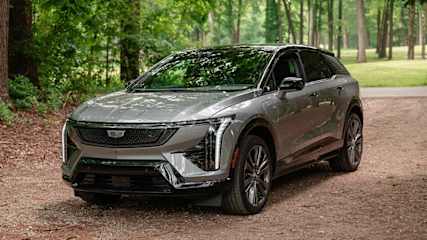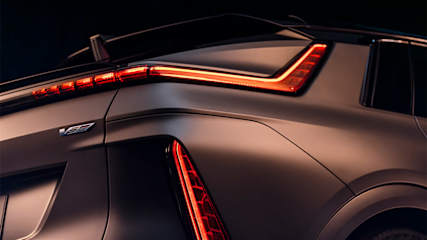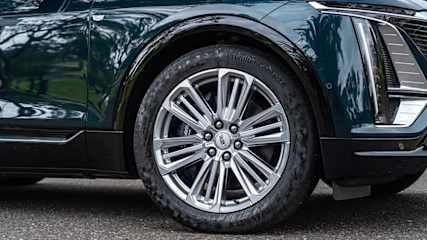Ferrari F80 2026 review - International first drive
By Stephen Corby · 11 Jul 2025
You could buy 142 Subaru WRXs, 25 Porsche 911s, or seven average-priced houses, and one apartment, in Melbourne, for $7 million, or you could have just one Ferrari F80.Believe me when I say this is not the kind of math you want to be doing when you are driving one of the very few existing examples of this absurdly astonishing supercar on a public road. Every other driver starts to look like a potentially expensive threat, particularly in Italy, where people drive as if their lives depend on their next coffee.There are other potentially even more alarmingly large numbers to worry over when you are invited to take Ferrari’s freakish F80 for a blast around the Misano race circuit in Italy. Foremost is the fact that this car has 1200 horsepower, which is 20 per cent more power than a Formula 1 car is allowed to deploy. Just think about that. I thought about it a lot as I lay awake the night before trying it.The F80 can also allegedly destroy the 100km/h mark faster than an F1 rocket, in just 2.1 seconds, and can smash its way from zero to 200km/h in 5.75 seconds. My favourite factoid, however, was intoned by an impossibly calm-sounding Ferrari driving instructor who told us there was one corner of the Misano track where we’d be able to feel the full whack of the F80’s active aerodynamic package, which provides more than one tonne of downforce… at 250km/h.Making all of these speeds possible is an implausibly engineered version of the turbocharged 3.0-litre V6 hybrid found in the already hugely impressive Ferrari 296 GTB (which was, until now, the greatest car I’ve ever driven), where it makes 614kW. In the F80 it’s delivering 883kW, which quite simply makes every other car I’ve ever driven seem a bit limp.My first drive was in the passenger seat, which is uncomfortably tiny and shoved towards the passenger door, and slightly behind the driver’s elbow, because Ferrari decided to give this car a “one-plus-one” seating position, thus making the far more pleasant driver’s seat the centre of attention (serious consideration was given to making it a single seater but apparently Ferrari owners like to frighten hell out of their friends).With a racing driver at the wheel I felt the downforce very keenly indeed, as well as the full force of the car’s incredible carbon ceramic brakes, which haul the F80 from 100km/h to zero in 28m, or from 200km/h in 98m. As for the acceleration, it was so unfeasible, so violently virile, that I wondered whether it was too late to change careers, or fake a heart attack. Actually that wouldn’t have required much acting.Obviously an enormous amount of development work has been done on the engine, but it also benefits from new e-turbos - turbochargers with electric motors that can help spin them up to 160,000rpm when there’s not enough exhaust gas to work with, basically eliminating lag - borrowed, among many other things, from Ferrari’s F1 team. As we pulled into the pits I thanked my Italian friend and pointed out that I would not be driving the F80 like that. He looked like I had told him the car was ugly (and dear goodness it is not, it’s stunning, with a real Formula 1 aesthetic and butterfly doors) and slow. “But… why NOT?!!?” He knew, of course, what I was about to discover, which is that this F80 performs miracles. Not only does it somehow get almost double the power that a V10-engined Lamborghini Huracan produces to the ground without digging holes in the surface or causing the tyres to explode, it’s actually encouraging to drive. On my outlap, I was wondering what kind of lunatic would want a car with this much hairy-handed gorilla grunt and treating the throttle as if it was covered in scorpions. A few short and furiously fun minutes later, I was madly in love with the F80 shove. A few hours later I was pushing the car to the point where I was sweating for fun rather than from fear.Much like Lamborghini, Ferrari has come to accept that there is a point where a car has too much power to drive the rear wheels alone (the engineers tell me this is around 1000 horsepower), and has developed a new all-wheel-drive system for the F80, using an electric motor in each front wheel and extremely clever torque vectoring.Then there are the various Side Slip Control and traction systems, which are constantly analysing just how much power can go to any wheel without throwing you sideways, systems which are working in milliseconds.All of this works so well that the F80 never felt snappy, even with a real driver at the wheels, just entirely confidence building, encouraging; it makes you feel like a better driver. Like a super human one, even. I have never enjoyed driving anything this much, nor have I ever driven anything so fast, while still feeling comfortable. The steering, though the very F1-style wheel, is perfect, the gut-squeezing feel of the downforce keeping you nailed to the ground through corners just adds more confidence, widening the envelope of what you can achieve.And the next day, they let us drive it on a public road, where my insane co-driver hurled it quickly and easily past the 300km/h mark, as Italians cheered.Here, too, the F80 surprised and delighted, because it was nowhere near as brutally hard as I had feared. It’s not comfortable, nor as blessed with ride/handling balance as a 296 GTB, but it’s pretty damn good. And I have a new favourite vehicle.This is a hugely significant car for Ferrari, which only applies the term “supercar” to its most elevated and exhilarating vehicles, those which come along roughly once a decade. The first Ferrari supercar was the legendary GTO, followed by the F40, then the F50 and the Ferrari Enzo. The last entrant into that rarefied club was the La Ferrari, a properly wild V12-powered machine launched back in 2013. The F80 recently destroyed the lap record set by La Ferrari at the company’s famed Fiorano track, beating it by 4.4 seconds.Sure, the price is absolutely absurd, but they could charge twice as much and people would still buy one, and I’d still want one. Around 20 Australians have already done so.










.jpg)





.jpg)